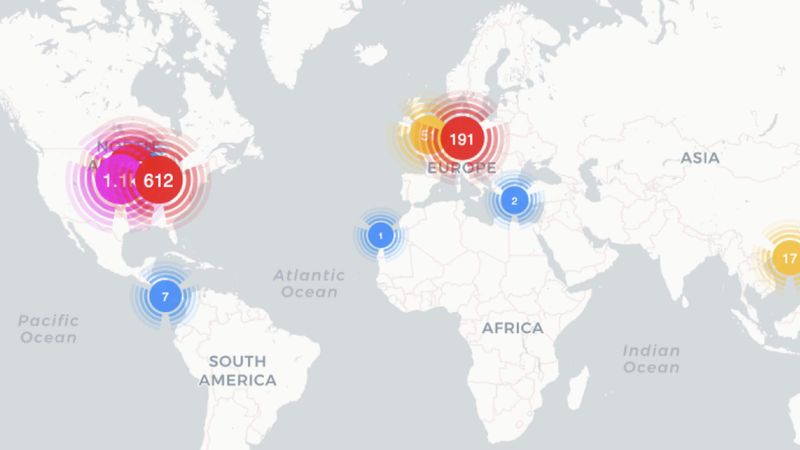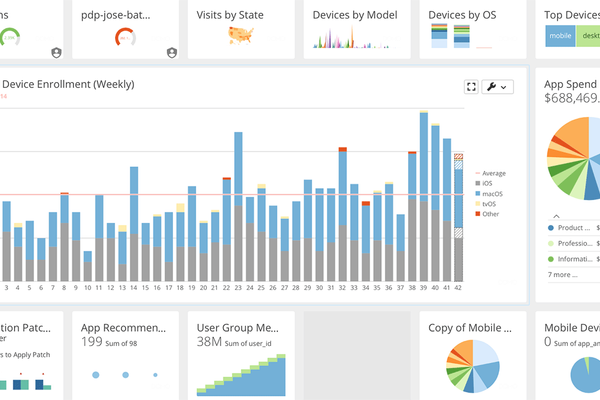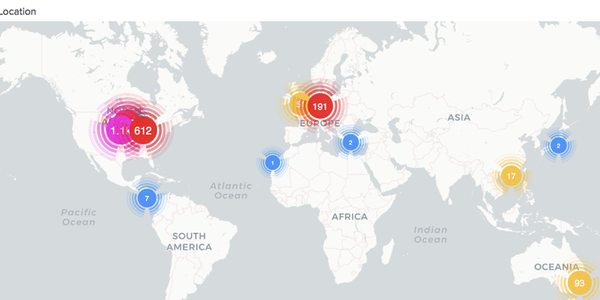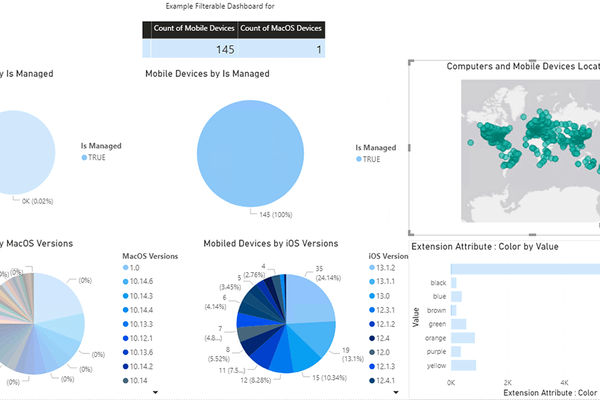Jamf Pro Reporting Solutions: going beyond the dashboard with BI tool integrations
Since 2002, Jamf Pro has been a tool IT professionals rely on to keep track of inventory, hardware and software details, and device usage. As Apple deployments have grown and matured, Jamf Pro admins have asked for better ways to surface the data that matters. This request isn’t always personal; when companies like IBM and Jamf say Apple devices have a lower total cost of ownership it’s not uncommon for executives to wonder if their own data reflects this new reality.
Jamf Pro 10.0 introduced Dashboards as a simple way to keep visual tabs on Smart Groups, policies, and configuration profiles— but our admins wanted more. JNUC 2019 brought it. By integrating Jamf Pro with three leading Business Intelligence platforms, our admins can slice, dice, merge, and visualize data from Jamf Pro in more ways that can help drive educated business decisions. Informing and empowering stakeholders with robust data sets about their Apple deployments can help create the platform advocates your organization needs.
Jamfs Matt Armstrong and Kyle Pazandak, systems engineers in research, joined Nick Amundsen, a product strategy VP, to explain these integrations at a session during JNUC 2019.
All of the BI integrations announced at JNUC 2019 are API-driven and work seamlessly with Jamf Cloud. They are well written, thoroughly documented and easy to to get started with. Whether Business Intelligence is a strong competency within your organization or something you are exploring for the first time, there is likely a reporting tool that fits your needs.
The JNUC session gave an overview of all three tools, but you can expect more information in the coming months.
With a cloud-first strategy and a strong suite of mobile apps, DOMO makes it easy to put the right information in the hands of people who need it. DOMO’s visual editor makes it easy to drag-and-drop datasets, enhance them with transform functions and then create an output. DOMO doesn’t just show you your current device counts or data like the Jamf Pro dashboard. It can show historic data from the point of integration on. This context drives DOMO’s ability to forecast and predict future trends. Packaging all this information in easy-to-understand cards makes it simple for a user to see high-level data, or dive deep if needed.
If you already have DOMO in your environment, it’s easy to get started with the Jamf Pro Connector. There is documentation in the DOMO kBase under the “Connectors for IT” section. If you haven’t used a BI tool in your organization before, DOMO has more of a gradual learning curve than traditional offerings. Here is where you can get started with DOMO in your organization.
As workforces become more mobile and distributed, it’s more important than ever that IT operations teams deliver a high quality of service and availability. Across the globe, enterprise IT relies on Splunk to monitor business critical applications and infrastructure. Splunk has a thriving community and partner ecosystem with 1000+ apps and add-ons that make it simple to integrate with the tools you already use.
Jamf worked closely with the Splunk team to develop the Jamf Pro integration which can be found on SplunkBase. This integration is both Splunk AppInspect- and Cloud-certified so you can be confident installing it in your environment. Additionally, the setup sequence is presented as a modular input form making it incredibly easy to get started. The current iteration can import mobile device and computer data from one or multiple Jamf instances, as well as configuration information. Future enhancements to this integration will include pre-built dashboards and visuals as well as the ability to export Jamf Cloud logs directly to Splunk.
The last reporting tool that Jamf announced integration with at JNUC 2019 was Microsoft’s Power BI. According to Gartner’s 2019 report, Power BI is enjoying a multi-year residency as a visionary leader in the analytics and BI platform space. PowerBI is prevalent across many Jamf organizations because it is included with the Microsoft Office 365 Enterprise E5 license. If you haven’t taken a look in a few years, Power BI has gracefully migrated to become an enterprise-grade SaaS reporting solution, and Power BI desktop has remained a free application.
Similar to the other platforms, after integration it is easy to drag and drop data sources onto graph types to make your Jamf Pro device data simple to understand. The integration with Jamf Pro will be available in the Power BI App Store soon. Until then, it is available on Jamf’s GitHub.
Data for the masses
Whether your internal goals are to increase the ease of on-boarding, manage application spend, or roll-out critical patches in 24 hours or less, Jamf Pro is the tool you rely on to get the job done. These new integrations announced at JNUC 2019 allow you to track, monitor, visualize and forecast this data in a range of reporting tools that empower you and others within your organization. Our admins are proud of their ability to manage Apple at scale without sacrificing security or user experience. Now they can tell that story in three industry leading business intelligence platforms: DOMO, Splunk, and Power BI.
by Category:
Have market trends, Apple updates and Jamf news delivered directly to your inbox.
To learn more about how we collect, use, disclose, transfer, and store your information, please visit our Privacy Policy.





